Instructions for speeding up virtual machines in full set
Virtual machines provide virtual hardware and run multiple operating systems on the computer at the same time. Therefore, sometimes its performance will be a bit slow. Here are some tips to help you 'squeeze' performance on each virtual machine like VirtualBox , VMware , Parallels or other virtual machines.
Create a virtual drive with limited capacity instead of an extra capacity drive
When creating a virtual machine, you can create two different types of virtual disks. By default, virtual machine programs will often use drives with extended capacity, which will gradually increase in size when increasing data.
For example, if you create a new virtual machine with an extra capacity drive with a maximum size of 30GB, it will not immediately occupy 30GB of space on the hard drive. After installing the operating system and programs, it only uses 10GB. And when adding multiple files to the virtual disk, it will gradually expand to a maximum size of 30GB.
This is very convenient, because each virtual machine will not occupy a large amount of unnecessary space on the hard drive. However, it is slower than creating a disk with limited capacity. When creating a limited capacity disk, all of that 30GB capacity will be allocated immediately.
However, a fixed-capacity drive uses more space on the hard drive, but adding new files to the virtual machine's hard disk is faster and there is no file fragmentation.
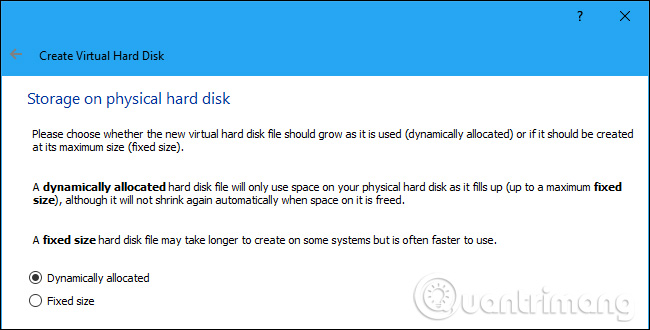
Install virtual machine software tool
After installing a guest operating system inside a virtual machine, the first thing you need to do is install the driver package of the virtual machine software such as Guest Additions for VirtualBox, VMware Tools for VMware or Parallels Tools for Parallels. These packages include special drivers that help the guest operating system run faster on virtual machine hardware.
How to install the driver package is very simple. In VirtualBox, start the guest operating system and click Devices> Insert Guest Additions CD Image . You can then launch the installer from the drive in the virtual machine. On VMware, select the option Install VMware Tools in the virtual machine menu. In Parallels, click Actions> Install Parallels Tools .
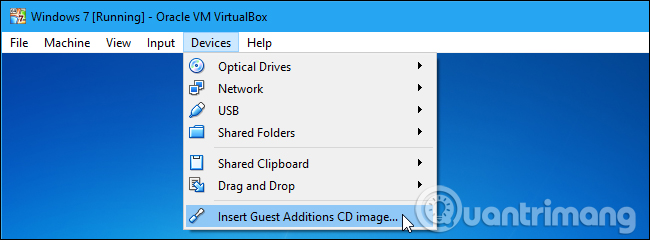
Follow the on-screen instructions to complete the installation process. If you're using the Windows guest operating system, this setting will be the same as installing any other Windows application. Be sure to always update the virtual machine programs, if you see the update to Guest Additions or VMware Tools, install it.
When running antivirus programs, do not scan virtual machine folders
Your computer's antivirus program may be scanning virtual machine files whenever they are accessed, reducing performance. Anti-virus software cannot be seen inside a virtual machine to detect viruses running on the guest operating system, so this scan is not useful. To increase speed, you can remove the virtual machine directory in the scan list of antivirus programs.
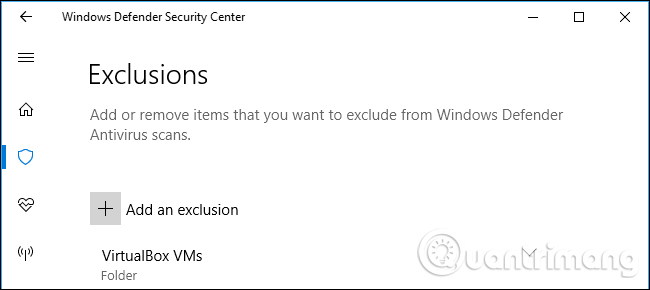
Turn on Intel VT-x or AMD-V
Intel VT-x and AMD-V are special processor extensions that help improve virtualization. New Intel and AMD processors often have these features. However, some computers do not automatically activate them. You may have to enter the computer's BIOS and enable this setting. See the article How to check Virtualization on Windows 10? to know if my computer has been virtualized.
AMD-V is usually activated automatically if it works on hardware, but many Intel computers do not activate Intel VT-x. Here's how to turn on virtualization Intel VT-x or AMD-V in the BIOS, then start installing the virtual machine program.
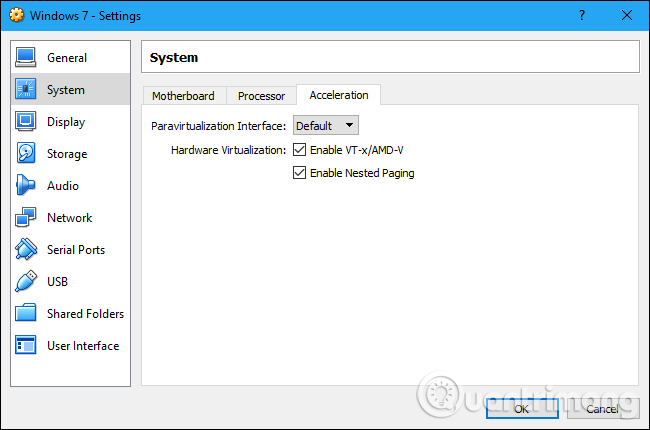
Allocate more memory
Virtual machines are very 'hungry' memory. Each virtual machine contains an entire operating system, so you should separate your computer's RAM into two separate systems. Microsoft recommends leaving at least 2GB of RAM for a 64-bit Windows 7 system and this recommendation applies to Windows 7 as it is running in a virtual machine. If you are running applications that require high memory in a virtual machine, you can allocate more than 2GB of RAM so that Windows does not have to convert to the drive.
You can allocate more RAM in the virtual machine settings dialog (note, you need to turn off the virtual machine before you do this). Try to give it at least 1/3 of your computer's RAM, though you can do more if you want.
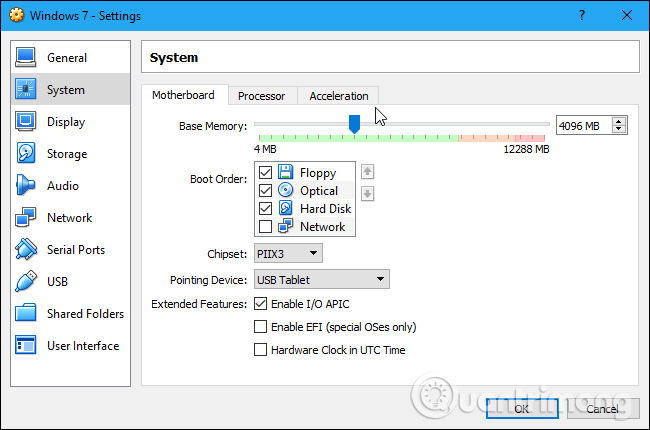
If there is not enough RAM in the computer to run virtual machines at a comfortable speed, consider upgrading RAM-8GB.
Allocate more CPU
The computer CPU does all the work of running the virtual machine and its software, so the more CPU the virtual machine runs, the better. If you have a computer with a multi-core CPU, you can assign multiple cores to the virtual machine from its installation window. A virtual machine with two or four cores will react faster than a single-core virtual machine, as well as a computer with multiple cores.
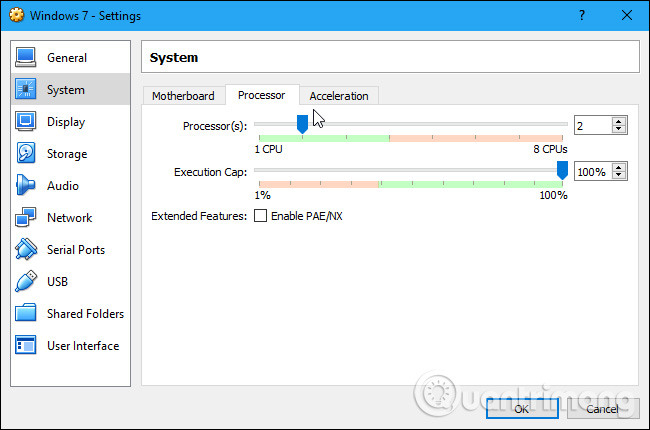
If you are using an old CPU with only one or two cores, you should upgrade the CPU to at least two cores to run the virtual machine faster.
Fine tune the microphone settings
Tweaking some video settings can also improve virtual machine speed. For example, enabling the 2D feature in VirtualBox can improve video playback in virtual machines, while enabling the 3D feature will allow users to use some 3D applications at a more reasonable rate. Increasing video memory assigned to a virtual machine can also speed up 3D graphics. However, upgrading the graphics card is not helpful in improving virtual machine performance.
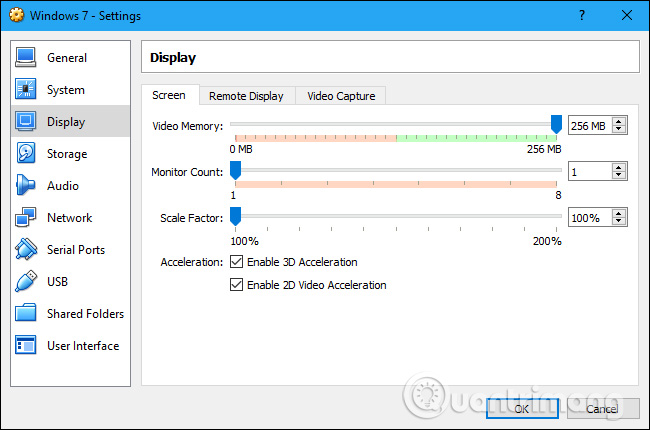
Place the virtual machine on the SSD
A solid state drive is one of the best upgrades you can do to speed up your computer and this is similar to virtual machines. Many people store virtual machines on secondary mechanical drives, because they are larger, but will make virtual machines run much slower. So if possible, create some space on the SSD and put the virtual machine on it.
Also, avoid leaving the virtual machine files on a drive unless you know the external drive is fast enough. A fast USB 3.0 drive with good file access time can provide good performance.
Pause t good because I turn off the phone
When you have finished using the virtual machine, you want to save its status instead of turning it off completely so that the next time you access the virtual machine, just double click to start. The guest operating system will continue at the place where you stopped the last time instead of starting from the beginning.
This is similar to using hibernation or suspending instead of turning off the computer. The virtual machine program saves the virtual machine memory contents to a file on the hard drive and downloads the file when booting the virtual machine.

Improve productivity in your computer
You can also improve performance within virtual machines in similar ways to speed up your computer. For example, turning off background applications and startup programs with virtual machines will improve the boot time of the guest operating system and reduce the amount of RAM used by the virtual machine. If you're using a mechanical drive, defragmenting the virtual machine can also improve performance (although this doesn't work on SSD). Don't forget the standard advice just because it's a virtual machine, virtual machines are like regular computers.
Use other virtual machine programs
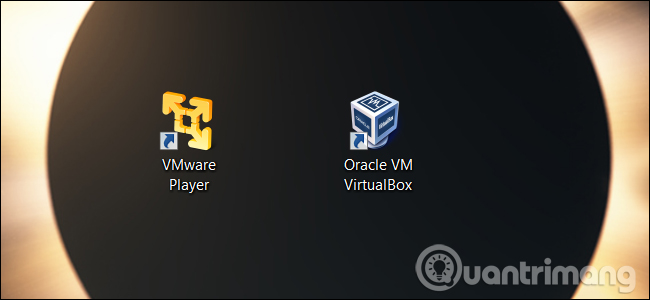
Some people like to use VirtualBox because they feel it runs faster, while some choose VMware for that reason as well. A faster virtual machine program may depend on the host operating system, guest operating system, system configuration or some other factor. But, if you don't get the performance you want, try another program. VirtualBox is completely free, while VMware Workstation Player is free for non-commercial purposes. If you're using macOS, you can use Parallels Desktop and VMware Fusion.
See more:
- VirtualBox and VMware: Which virtual machine software is better?
- Create virtual machines with Hyper-V on Windows 8 and Windows 10
- 5 best virtual machine applications
You should read it
- Add drives for virtual machines running Windows XP on VirtualBox
- Stealing virtual machines and virtual machine data
- Learn about virtual machines
- Compare VirtualBox, VMWare and Hyper-V
- Instructions to increase the virtual hard drive capacity on Virtualbox
- Instructions on how to create virtual machines with VirtualBox
- Instructions for fixing errors do not install VMware Tools
- How to convert virtual machines from VMware to VirtualBox and vice versa
May be interested
- Instructions for connecting to the internet for Virtual PC virtual machines
 if you cannot access the internet after installing the virtual machine, the network configuration may be incorrect. to fix this, you will need to make some adjustments to the network settings in virtual pc.
if you cannot access the internet after installing the virtual machine, the network configuration may be incorrect. to fix this, you will need to make some adjustments to the network settings in virtual pc. - Instructions for creating virtual machines with VirtualBox quickly and easily
 virtual machines help users experience other operating systems without having to install them directly on a real machine. a typical example is virtualbox, a software that supports multiple platforms such as windows, linux, and macos.
virtual machines help users experience other operating systems without having to install them directly on a real machine. a typical example is virtualbox, a software that supports multiple platforms such as windows, linux, and macos. - Add drives for virtual machines running Windows XP on VirtualBox
 normally, virtual machines are set up for fixed storage, and once you reach that limit, you may feel confused, unless you know how to add virtual drives to the machine.
normally, virtual machines are set up for fixed storage, and once you reach that limit, you may feel confused, unless you know how to add virtual drives to the machine. - How to rename Hyper-V virtual machines using PowerShell and Hyper-V Manager
 sometimes when you create a hyper-v virtual machine, you must give it a name and sometimes the naming is incorrect or simply you no longer want to use that name. this article will provide three methods to rename a hyper-v virtual machine to your liking.
sometimes when you create a hyper-v virtual machine, you must give it a name and sometimes the naming is incorrect or simply you no longer want to use that name. this article will provide three methods to rename a hyper-v virtual machine to your liking. - What is a virtual GPU?
 virtual gpu allows sharing on multiple virtual machines. this has greatly improved the performance of applications and desktops, as well as allowed organizations to build virtual desktop infrastructures, helping to increase cost efficiency for businesses.
virtual gpu allows sharing on multiple virtual machines. this has greatly improved the performance of applications and desktops, as well as allowed organizations to build virtual desktop infrastructures, helping to increase cost efficiency for businesses. - Virtual machines without TPM 2.0 are prohibited from installing Windows 11 Insider Preview
 it seems that microsoft is tightening the list of devices that can install windows 11 insider preview.
it seems that microsoft is tightening the list of devices that can install windows 11 insider preview. - Create a virtual hard drive, turn the real machine into a virtual machine with Disk2vhd
 today we will look at disk2vhd as a simple solution to create virtual drives that convert real windows machines into virtual machines.
today we will look at disk2vhd as a simple solution to create virtual drives that convert real windows machines into virtual machines. - Instructions on how to fix 'The VMware Authorization Service is not running'
 simply put, vmware workstation is a computer software that supports users to run multiple operating systems (os) at the same time, including windows xp, windows 7, windows 8, redhat, and several other operating systems.
simply put, vmware workstation is a computer software that supports users to run multiple operating systems (os) at the same time, including windows xp, windows 7, windows 8, redhat, and several other operating systems. - Learn about virtual machines
 virtual machines allow you to run different operating systems with the current operating system. operating systems will act as programs on a computer.
virtual machines allow you to run different operating systems with the current operating system. operating systems will act as programs on a computer. - Monitor Hyper-V with the command line (Part 2): Basic monitoring commands
 in this article, we will learn how to access the virtual machine list and see general information about virtual machines with simple powershell statements. we will also look at stop commands and start virtual machines from the command window.
in this article, we will learn how to access the virtual machine list and see general information about virtual machines with simple powershell statements. we will also look at stop commands and start virtual machines from the command window.










 5 customizations on Windows 10 make the game more 'smooth'
5 customizations on Windows 10 make the game more 'smooth' 10 tasks to clean up your Windows computer should not be ignored
10 tasks to clean up your Windows computer should not be ignored How to use TeraCopy to speed up file copying
How to use TeraCopy to speed up file copying Delete junk files, temporary files in Windows
Delete junk files, temporary files in Windows How to use Memory Cleaner to release RAM
How to use Memory Cleaner to release RAM Top best virtual RAM creation software on today's computer
Top best virtual RAM creation software on today's computer